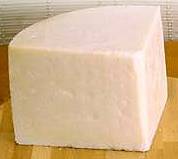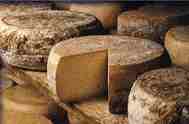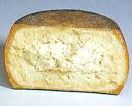Pecorino – Goat Cheese – Are they all the same?
written by David Anderson limited rights reserved ViewItaly.blogspot.com
 Pecorino is an antique cheese. Its origins begin about 2000 years ago even though the first documented mention of Pecorino dates in the 700s. Italy has many different types of Pecorino. They have similarities but are distinguished by the type of milk, the method of production and the quality of workmanship exhibited by the artisan producer. There are five distinct types of Pecorino defined and protected by Italian law. They are Pecorino Romano, Fiore Sardo, Pecorino Sardo, Pecorino Toscano, and Pecorino Siciliano.
Pecorino is an antique cheese. Its origins begin about 2000 years ago even though the first documented mention of Pecorino dates in the 700s. Italy has many different types of Pecorino. They have similarities but are distinguished by the type of milk, the method of production and the quality of workmanship exhibited by the artisan producer. There are five distinct types of Pecorino defined and protected by Italian law. They are Pecorino Romano, Fiore Sardo, Pecorino Sardo, Pecorino Toscano, and Pecorino Siciliano. Most Italian products have characteristics that are defined by law. The laws for wine and foods are similar to copyright laws the difference being that copyright laws are designed to guarantee that the author gets paid for his product while Italian product laws protect the consumer from fake products. So if you see a Pecorino Romano produced in Wisconsin you know it cannot be Pecorino Romano and most likely will not have the flavor or consistency of the real Pecorino Romano.
Most Italian products have characteristics that are defined by law. The laws for wine and foods are similar to copyright laws the difference being that copyright laws are designed to guarantee that the author gets paid for his product while Italian product laws protect the consumer from fake products. So if you see a Pecorino Romano produced in Wisconsin you know it cannot be Pecorino Romano and most likely will not have the flavor or consistency of the real Pecorino Romano.The laws guarantee that the cheese is produced by a specific process resulting in uniformity of taste and texture.
The different characteristics are:
 Pecorino Romano - made from fresh lamb’s milk and rennet from herds located in Lazio, Sardegna and Grossetto. It has a bit of a bite, indicated as hot spicy. The cheese is aged at least 5 months for the table version and 8 months for the harder grated type. The more a cheese ages the more pronounced its bite. Produced in forms of 20-35 kg.
Pecorino Romano - made from fresh lamb’s milk and rennet from herds located in Lazio, Sardegna and Grossetto. It has a bit of a bite, indicated as hot spicy. The cheese is aged at least 5 months for the table version and 8 months for the harder grated type. The more a cheese ages the more pronounced its bite. Produced in forms of 20-35 kg.Fiore Sardo - made from Bovine milk and lamb rennet from Sardegna. Fiore Sardo's crust will have a color that varies from yellow to brown and the cheese will be white or have a slight tendency toward hay yellow. It is aged at least six months and will become more spicy as it ages.
 Pecorino Siciliano - made with lamb’s milk and rennet from Sicily. This cheese is aged at least four months. It has the strongest odor and is the most spicy of the Pecorino cheeses. Produced in forms of 4-12 kg.
Pecorino Siciliano - made with lamb’s milk and rennet from Sicily. This cheese is aged at least four months. It has the strongest odor and is the most spicy of the Pecorino cheeses. Produced in forms of 4-12 kg. Pecorino Toscano - made with lamb’s milk and rennet from heards located only in Tuscany and a few towns near Perugia and Viterbo. Pecorino Toscano is aged at least four months. Pecorino Toscano has a mild and full flavor and very little bite while maintaining its distinct nature. Produced in forms of one to three kg.
Pecorino Toscano - made with lamb’s milk and rennet from heards located only in Tuscany and a few towns near Perugia and Viterbo. Pecorino Toscano is aged at least four months. Pecorino Toscano has a mild and full flavor and very little bite while maintaining its distinct nature. Produced in forms of one to three kg. Pecorino Sardo - There are two variations. The first is Dolce or mild. It is made with lamb’s milk and veal rennet. A softer cheese, Pecorino Sardo is mild in flavor and aged 40-60 days. The second is Piccante or spicy and is made from lamb milk and rennet. Aged at least 2 months, this is a hard cheese. It can be kept for an additional 90 days. Produced in form of two to four kg.
Pecorino Sardo - There are two variations. The first is Dolce or mild. It is made with lamb’s milk and veal rennet. A softer cheese, Pecorino Sardo is mild in flavor and aged 40-60 days. The second is Piccante or spicy and is made from lamb milk and rennet. Aged at least 2 months, this is a hard cheese. It can be kept for an additional 90 days. Produced in form of two to four kg.Pecorino is widely used in many regional dishes. Some of these are Amatriciana, Zucchini in Verde, Veal Involtini, Trippa and Pesto.
Tags: Pecorino Cheese Goat Cheese Italian Recipes Food and Wine Travel Italy
Labels: Cheese, Gourmet Foods, Italian Recipes, Lazio, Sardegna, Tuscany


4 Comments:
there's always pecorino (usu sardo) on the table here. my latest favorite is called "giglio sardo." i found it at di per di, can you believe that?
btw--(switching cheeses) have you ever had provolone del monaco?
11:28 AM
Provolone del Monaco. That is a new one for me! You will have to get me some info on that one.
11:58 AM
ok!
1:42 PM
For the moment the description of the provolone is only in italian, i think they will one in inglish as soon as possibile.
Provolone del monaco
1:27 PM
Post a Comment
<< Home